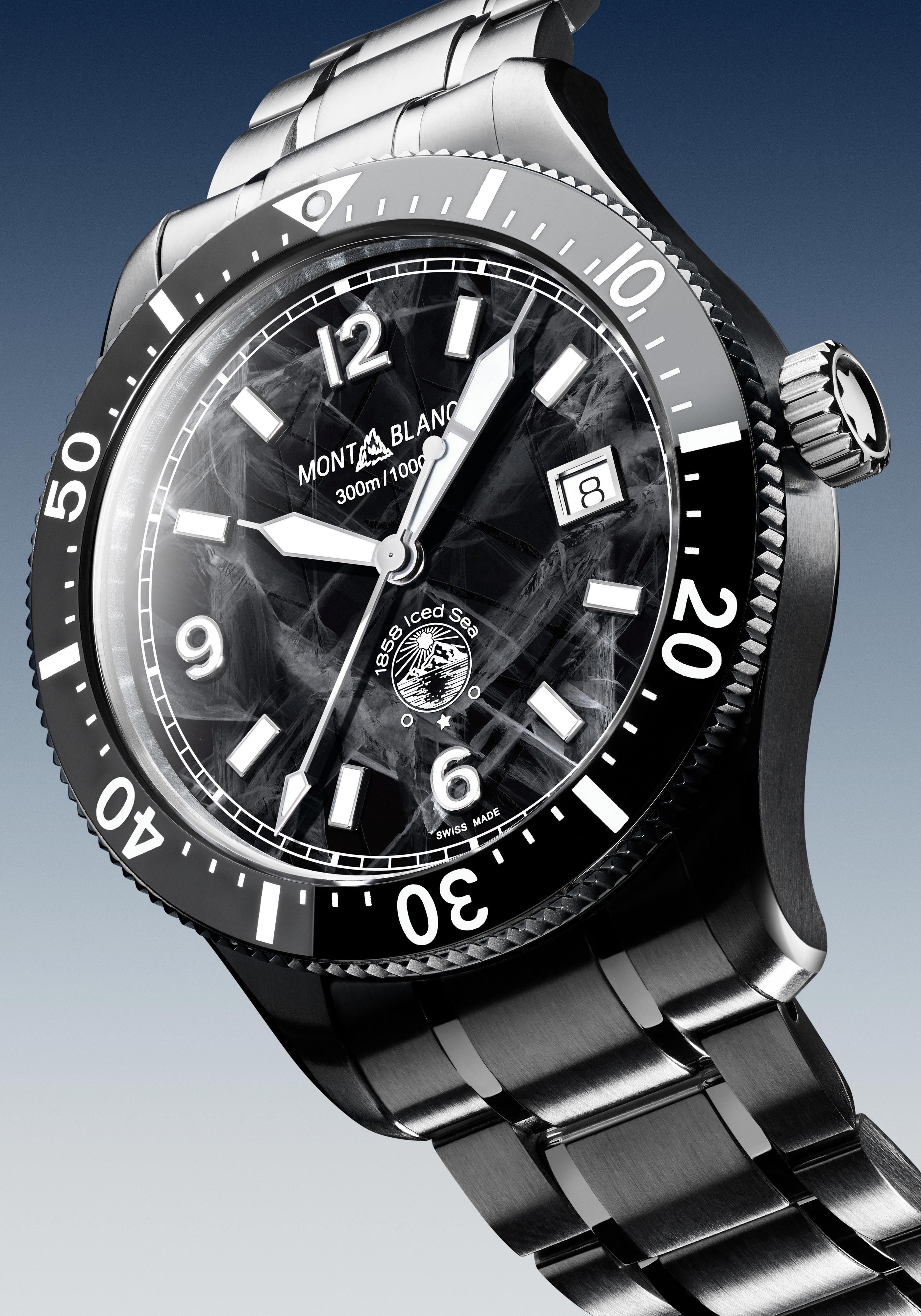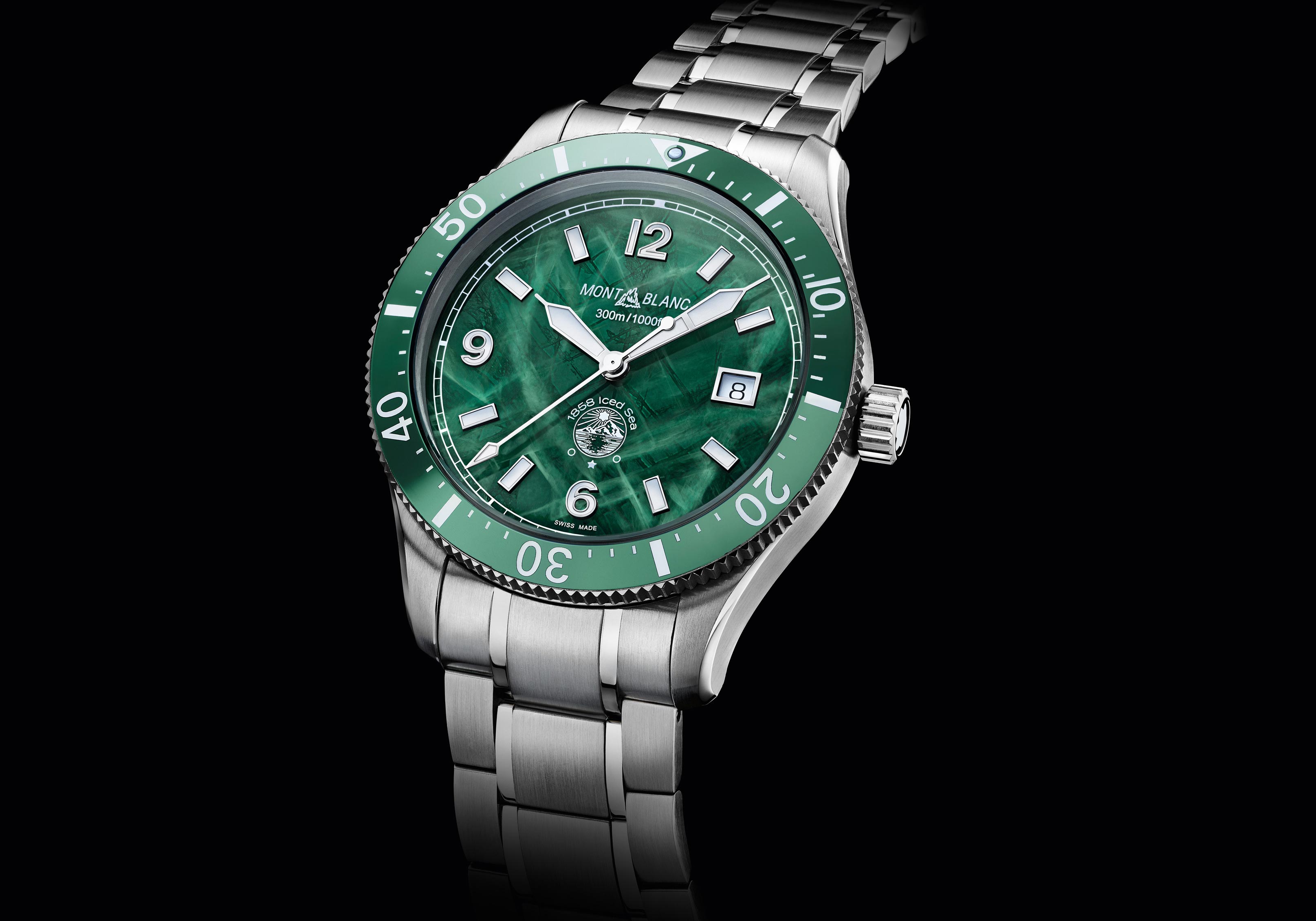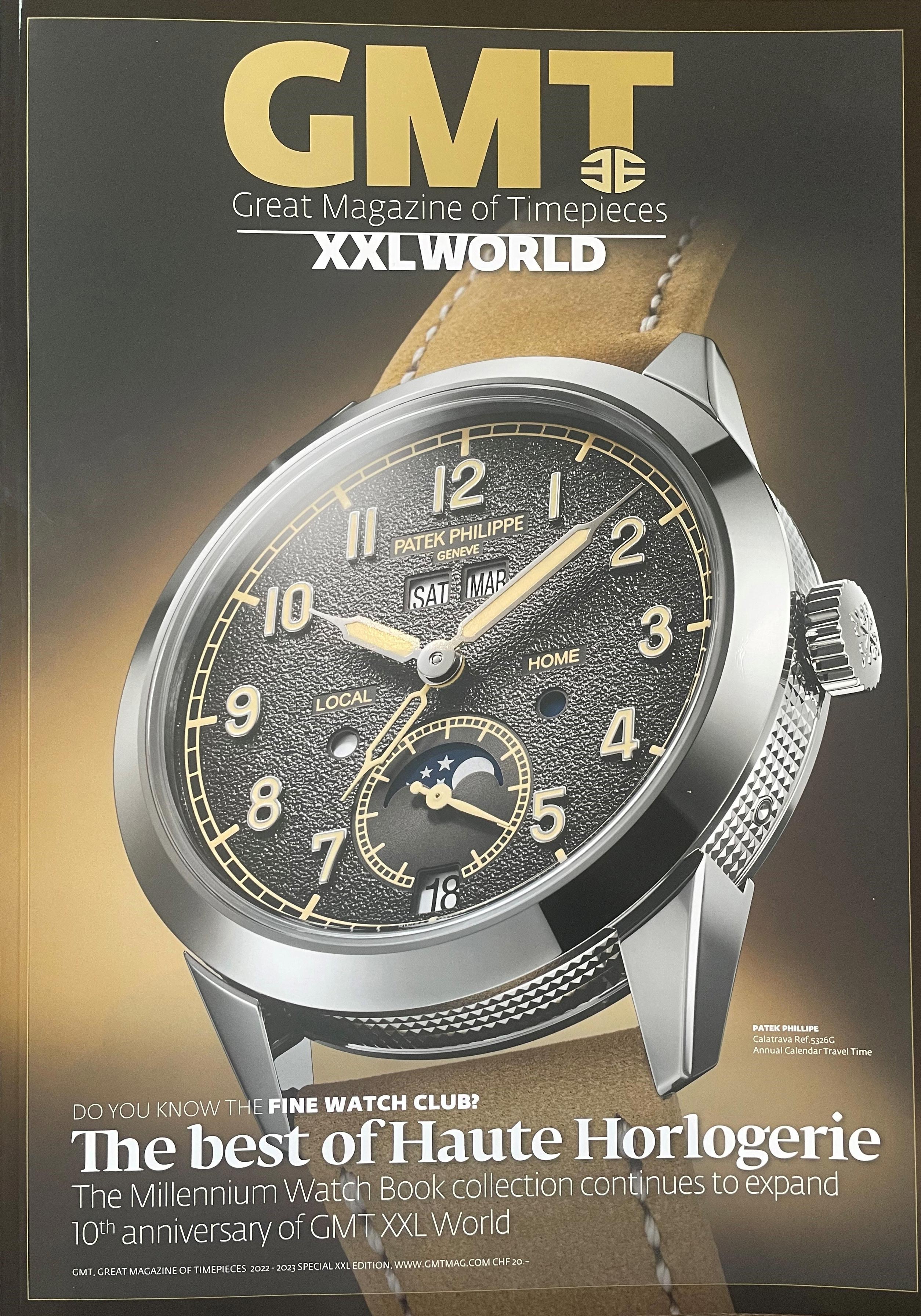One wonders why they hadn’t thought of it before. When a brand is called Montblanc, after Europe’s highest mountain, it’s only logical to dig into said mountain’s geography, topology and history. The result of these new ventures into the famous alpine peak is the 41-mm 1858 Iced Sea collection. 1858, as in the year Montblanc was founded. Iced Sea as in the glacier that runs down the Mont Blanc. This makes perfect sense, especially since they didn’t just name a timepiece after a place or a feature. They delved into the very nature of ice, in a boots-on-the ground way.
Ice Types
The Iced Sea is Europe’s third biggest and most famous glacier. At the risk of stating the obvious, it’s made of ice. Well, actually, not just ice. Ice plural, as there are several kinds, and they’re what’s being explored here. The most famous is blue ice, where bubbles of air trapped inside the crystal structure refract everything but blue light. There’s also black ice, where so few air bubbles are captured that it traps light instead. And there’s green ice, whose color comes from the vegetal species that manage to grow on the sub-zero surface, typically in Antarctica.
Depths
In any type of ice, veins run through a shifting structure, internal cracks that make this natural material anything but homogeneous, tame or boring. It’s also a complex visual effect to render, but Montblanc have managed that on the 1858 Iced Sea Automatic Date. The means to achieve the impression of a moving, living almost, slab of glacier ice are twofold. One is called Gratté Boisé. This ancient dial-making technique creates random grooves and cracks. The other is the extensive use of transparent lacquer to create gloss and depth. The total is 30 successive operations for one single dial. If the impression isn’t convincing on a photograph, it is very much so in real life, to a surprising degree even.

Immersed
Despite all this research into the depths of the Iced Sea glacier, the 1858 Iced Sea Automatic Date isn’t not entirely a mountain-themed watch. Since ice is water, it’s a diving watch. Granted, the population that actually practices iced water diving is scarce. But this is the nature of all diving timepieces: they are capable of achieving a lot and most end up never reaching deeper than three meters. In the spirit of technical achievement, the 1858 Iced Sea Automatic Date is 300-m water resistant, features a one-way rotating bezel with a scratch-proof ceramic insert, and complies with any and all specifications of the ISO 6495 norm, which defines a diver’s watch. And as a reminder, one is engraved on the caseback along with an iceberg, and as further proof, the case is fitted with an interchangeable bracelet and strap, with easy length adjustment on the buckle.
Contribute
There are few biotopes as endangered by climate change and global arming as glaciers. And the Iced Sea is a heavily scrutinized specimen whose volume and reach keep receding. In order to help reduce that sad state of fact, Montblanc is contributing to the the Chamonix-based Foehn Fund. Its aim is to support environmental programs that observe, protect, and raise awareness on the Mont Blanc’s Iced Sea.

Turning Minerva On Its Head
It must have been frustrating for Montblanc, to have to hide its flagship skill. Manufacturing the gorgeously finished Minerva movements is a key point in the brand’s offering. Yet all that horological beauty has to remain hidden on the dark side of every watch they make. Granted, a sapphire caseback will reveal these horological marvels, but only to a select few the owner will have chosen. It simply felt like a waste. So Montblanc came up with a solution. The Unveiled Secret Minerva Monopusher Chronograph took one of its flagship chronograph movements, and reversed it entirely. They reworked it too, so the gears that drive the hands are now on the dial side, which required adding no less than 21 dedicated components.

Reveal
The unveiled secret in question is the fact that the movement’s underrated beauty now shows directly under the dial rather than facing the wrist. That dial is reduced to the minimal, openworked structure, and helps reveal the intricate nature of calibre MB 16.26, a hand-wound, 2.5 Hz, monopusher chronograph, housed in a 43 mm case with the newly revealed fluted bezel. The latter is made of white gold, and a forgotten feature of Minerva timepieces, dating as far back as 1927. It’s now poised to become a signature of the Minerva collection. Another of those is the use of the yellow-green gold alloy Montblanc calls limegold, in which another limited edition of this reversed chronograph is available.
As a WorldTempus reader, we are delighted to offer you the latest digital version of this GMT magazine that you can download here






